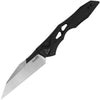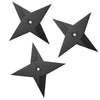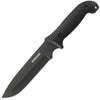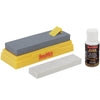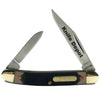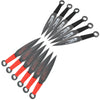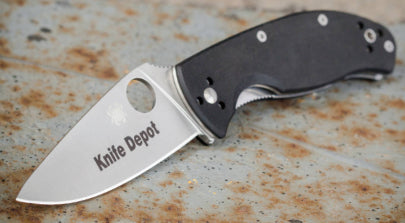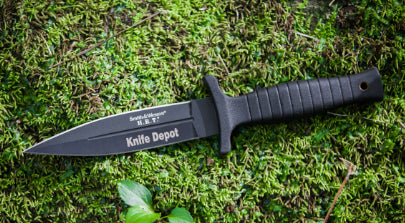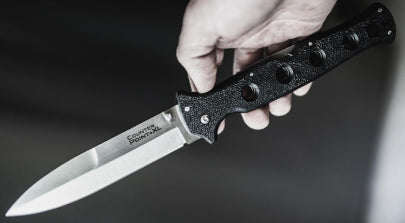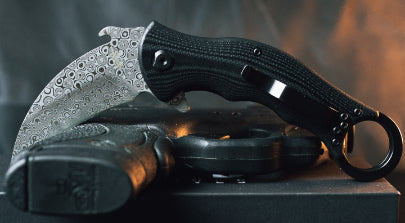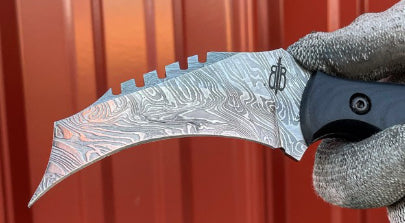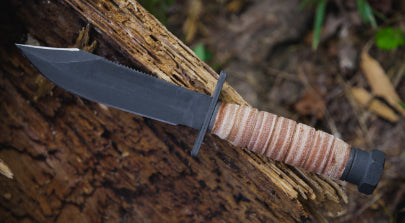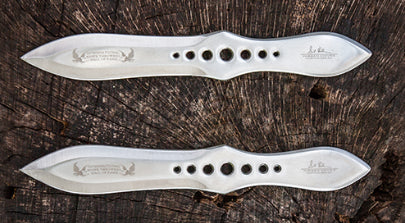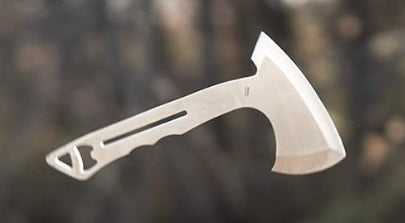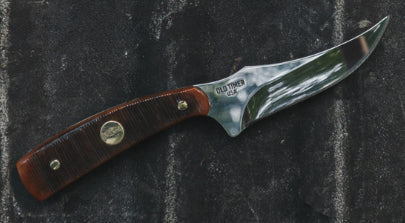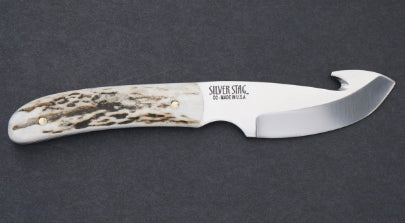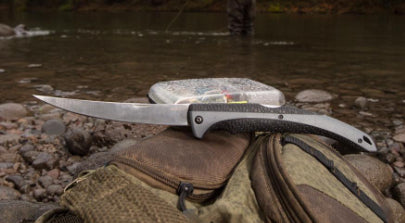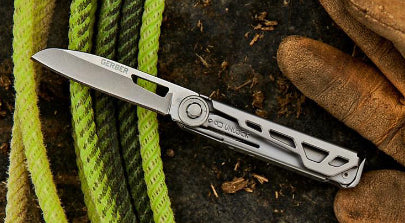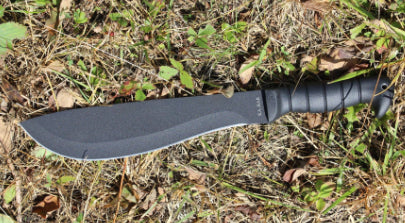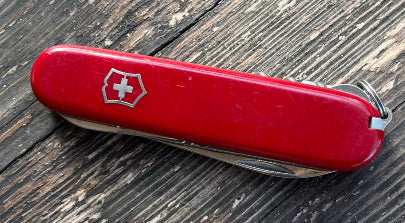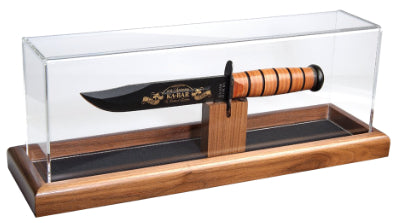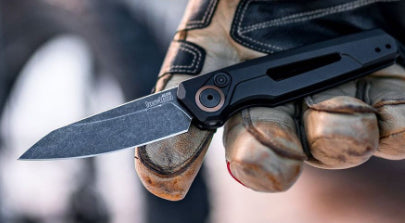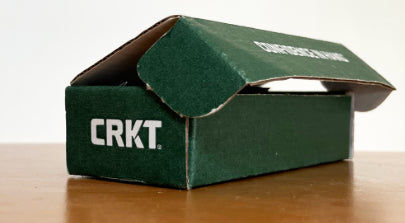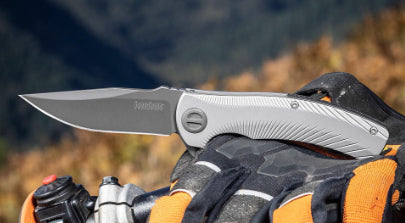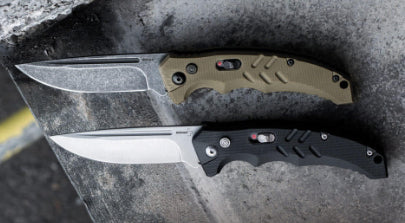Anatomy of a Knife
We welcome our customers' interest in knives of all shapes, sizes and applications, and understand that some of the more advanced terminology may leave the average buyer a little perplexed when confronted with some of the jargon of knife manufacture and construction. This abbreviated glossary of some of the more common knife terms will hopefully clear up some confusion and effectively guide the purchasing process and help knife enthusiasts become knife aficionados!
Knife Anatomy Basics

A knife is generally composed of two parts: the handle and the blade. Most often it is the shape and cut of the blade point that determines its intended usage and renders it a certain style (more on that below).
The belly is a designation used to describe the curved arc that extends outward along a blade's cutting edge.
The spine of the blade is the thickest, heaviest and, most often, unsharpened length of the bladeit supports the blade's cutting action and gives the blade its overall strength. Generally, the wider and thicker the spine of a blade, more force it can withstand in downward and side-to-side motion.
A tang describes the back or stock portion of the blade that extends partly into the handle or actually comprises the handle (called full tang).
The bolsters improve the blade's strength in the critical areas: the handle to blade junction, and the rear or butt of the knife where heavy impacts require reinforcement. The bolsters also help to protect and secure the handle.
Serrations are the sawtooth style modifications added to some select blades. They are usually placed toward the handle for greater application of leverage.
Different Styles of Blade Points

A spear point is used to refer to a blade that has uniform geometry on its point and thus often has two symmetrical edges.

A needle point (or dagger point) is when a blade has two symmetrical sharpened blades that taper to meet at a point. Unlike the spear point, which has rounded edges, a needle point blade is more sharply tapered to create a fine point thats ideal for piercing. This type of blade design is often found on knives primarily used self-defense.

A trailing point describes a blade where the point is cut upward, higher than and above the spine of the blade. This may or may not incorporate a secondary edge called a swage (which retains that designation regardless of whether or not it is sharpened or unsharpened). Generally used in fine, delicate work such as skinning and caping game. A popular point for hunting and bowie styles.

A clipped point (or slant point) is a knife where the back (unsharpened) edge of the knife runs straight from the handle and stops about halfway up the knife. Then, it turns and continues to the point of the knife. This "cut-out" area can be straight or curved, and is referred to as the "clip", which is how this shape got its name.

A sheepsfoot point describes a knife with a completely straight cutting edge with a spine and edge rounded downward to meet the point. These knives are great for applications that require a great deal of applied pressure, like cutting textiles or carving wood.

A drop point is one of the most popular blade styles, and is found in many different styles of knives. The back (unsharpened) edge of the knife runs straight from the handle to the tip of the knife in a slow curved manner, creating a lowered point. This lowered point provides more control and adds strength to the tip. While the tip on a drop point is not as sharp as the tip on a clip point, it is much stronger.

A tanto blade is derived from traditional Japanese swords and features a distinctive 45 degree cut to the tip of the point, allowing for a large amount of leverage in applying pressure on the spine for cutting and stabbing motions. The thick point of the tanto blade contains a lot of metal near the tip, so it is able to absorb the impact from repeated piercing that would cause most other knives to break.

A gut hook is a feature of some hunting knives and can can be found in many different positions on the blade. It is used to split the skin of game in gutting operations while dressing carcasses in the field.
Advanced Knife Anatomy

The quillon (pronounced key-own, per its French origins) is the part of the knife that forms a horizontal barrier between the blade and the handle or the handle and the butt and is utilized to stop the hand from sliding forward or backward on some blades. They are usually found on larger knives and swords and are a major factor in quickly and accurately sheathing and unsheathing these large blades.
The ricasso is the heavy thick shank of the blade between the grind and the front bolster (the part of the knife that reinforces the blade and serves as a connecting point between the blade itself and the handle).
The choil is a term used to describe the part of the blade where the unsharpened metal stops and the grind begins, or the area between the cutting edge and the tang.
A cannelure or fuller describes a distinctive "I" beam running down the center of the blade, and allows the knife to have reduced weight while still retaining overall strength. This is found more commonly on longer, larger blades.
Jimping comes from North English and Scottish parlance, and means neat, handsome or slender form. The term jimping is used to describe regular, machined cuts or cross-hatched patterns on the spine of a knife. Jimping is employed to improve traction on the blade for the thumb when applying downward pressure.
A pommel is derived from the French word for apple, and designates an ornamental globular mass on the butt of a knife.
A swage is generally used to describe a decorative or functional edge on the opposite side of a knife's primary edge.
Some knives feature a finger ring, which is a feature of tactical and combat knives that secures the knife to the hand by looping the forefinger through in a manner similar to a trigger guard.











